Opinions, People, Surf cultureWe Are All Surfers

A Review of Representation in Surfing
We are all surfers. But not all surfers are represented or treated in a fair, equal and balanced way. The most obvious example of this, and most relevant to recent wider events outside of the bubble of surfing, is the representation of women in surf culture, competition, media and industry.
Back in March, it was reported that the World Surf League held a meeting during which employees and contracted freelancers were reminded of the rules and their responsibilities – in particular pertaining to gender equality and appropriate behavior. The resultant headlines focused on the instructions to cinematographers to exercise discretion whist filming women’s heats, and specifically to “zoom out” when competitors (particularly those wearing bikini bottoms) are bottom turning or duck diving.
One female surfer’s experience of being asked for a comment on this story (by a UK news agency and media reseller) and having both her answer and an article that she wrote over a year ago quoted out of context and published in national newspapers, illustrates perfectly the ongoing issue of gender inequality and female representation both within surfing and as it is presented to the wider world.
What follows is Sophie’s story, but what’s important is that this isn’t really about Sophie – it is about a whole world of female surfers that are not being represented: black and coloured female surfers, female surfers across the LGBTQ spectrum, disabled female surfers, female surfers in conflict war zones, female surfers from impoverished communities. The list goes on. Sophie’s experience simply gives us the opportunity to bring this issue to people’s attention once again.
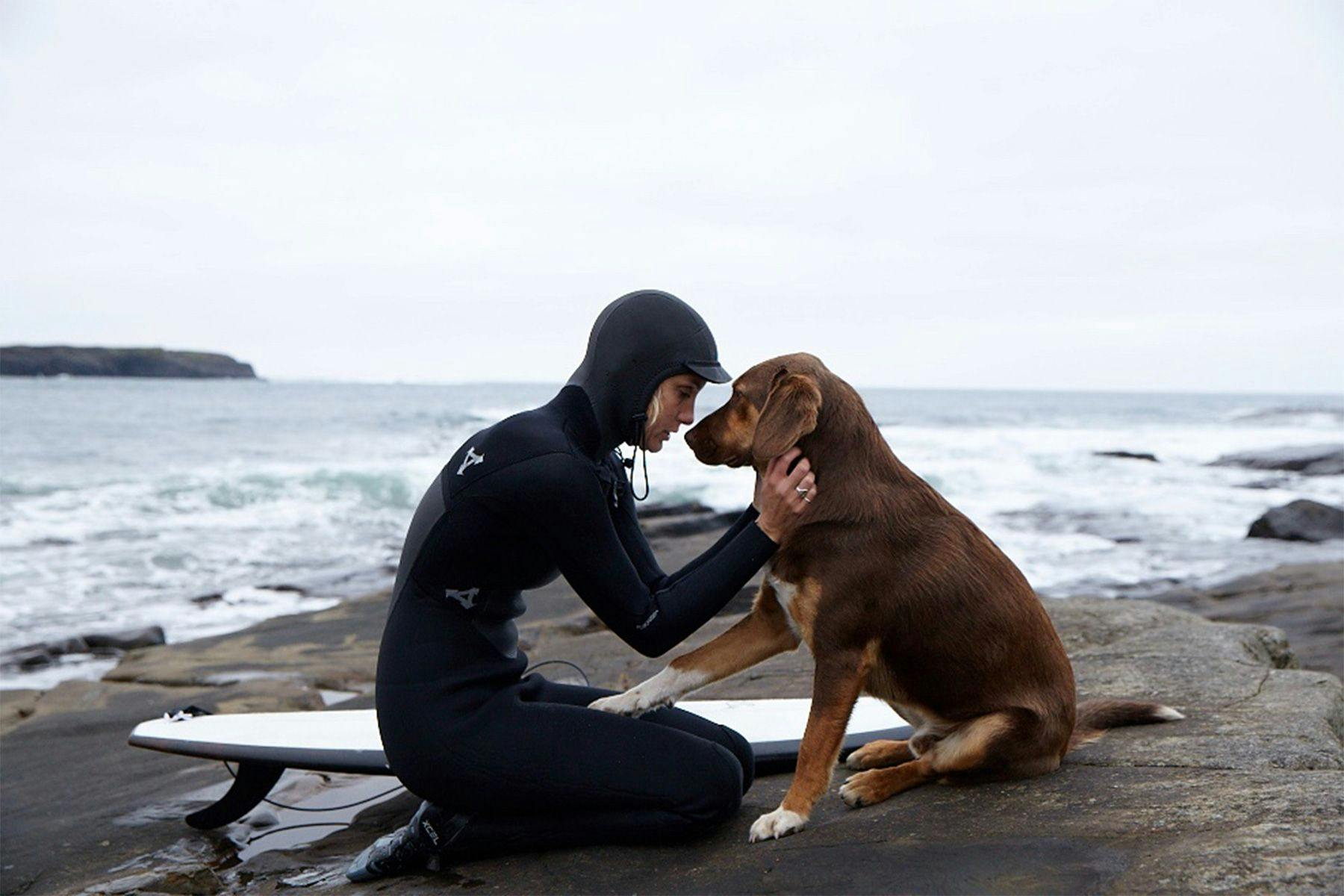
Sophie Hellyer with her dog in Ireland, photographed by Johannes Mink
Sophie Hellyer, like so many people, is layered, complex, and defies and does not deserve a single, simplistic label; she is a surfer, but she is also a lot of other things: writer, producer, environmentalist, open-water swimmer, sister and dog owner. The labels that the national media in the UK chose to use however were “former champion surfer” and “model”, because Sophie was indeed an English national champion in her teens, modeled for the brands that endorsed her as a surfer (including Roxy) and still models on occasions for brands whose values align with her own.
“I was asked what I thought about WSL photographers being told to zoom out on women in bikinis. My response was what women surf in should be irrelevant, but I would like to see a fairer representation of the female surfing community. I don’t like what the newspapers did with my words.”
What the newspapers did with Sophie’s words were to manipulate them and present them almost entirely out of context, publishing sensationalist articles that lead with old images of her wearing a bikini and headlines claiming that female surfers are being objectified and that she had received less coverage since she started wearing a wetsuit most of the time rather than a bikini. Never mind the fact that Sophie lives and surfs in the cold Atlantic waters of Ireland’s west coast. It was a mass-media cheap-shot, piggy-backing on a story about the representation of female athletes as a way of using the outdated adages that “surfing sells” and “sex sells” to shift some newspapers and get some clicks.
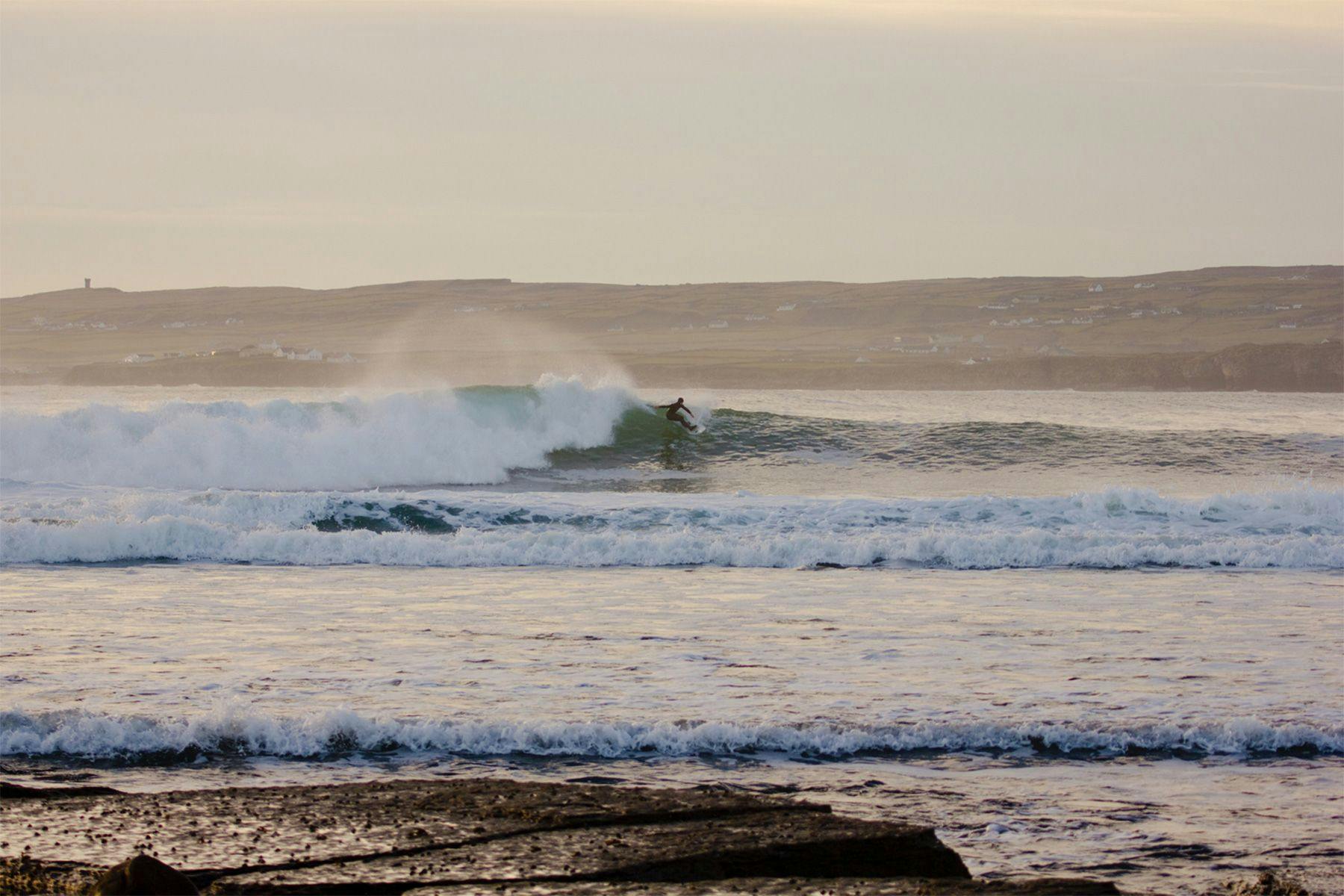
Sophie Hellyer surfing Lahinch, Ireland, photographed by Colin Cooney
“It is a classic example of media coverage operating under the guise of female empowerment, while ultimately objectifying and denigrating. Meanwhile, sportswomen miss out once again when it comes to recognition of their sporting talent.”
Anna Kessel, The Guardian newspaper, UK
It is this perpetuation of the damaging archetype of female surfers as only ever being tanned and scantily clad that needs addressing, and surely that is a change that must be led from within surfing – at large as a culture as well as the surf industry, surf media and world of competitive surfing. “Why are we female cold water surfers not being represented by so many surfing media outlets?” Sophie rightly points out, “Sport is supposed to set you free, not make you feel you have to be objectified to participate. I believe what we see, we can be. I speak to young girls who don’t see female surfers in the films about our coast and they question their place in the surfing world and whether they should be doing it at all.” The image that is currently being presented to young children – both female and male – of what surfing is and what they need to be in order to “be a surfer” is, at best, unhealthy. This isn’t to take away from the abilities and achievements of those female surfers and athletes who excel whilst wearing a bikini; not at all. It’s just that there’s more to surfing, and women’s surfing, than this. You can enjoy surfing whilst wearing a hooded 5mm with boots and gloves. You can enjoy surfing regardless of ability, or gender, or the colour of your skin, or the god/s that you may or may not worship, your sexuality, social status, or nationality. Just as much as you can surfing tropical perfection in boardshorts or a bikini. There is no criteria of requirements that determines who may or may not surf if they are presented with the opportunity.
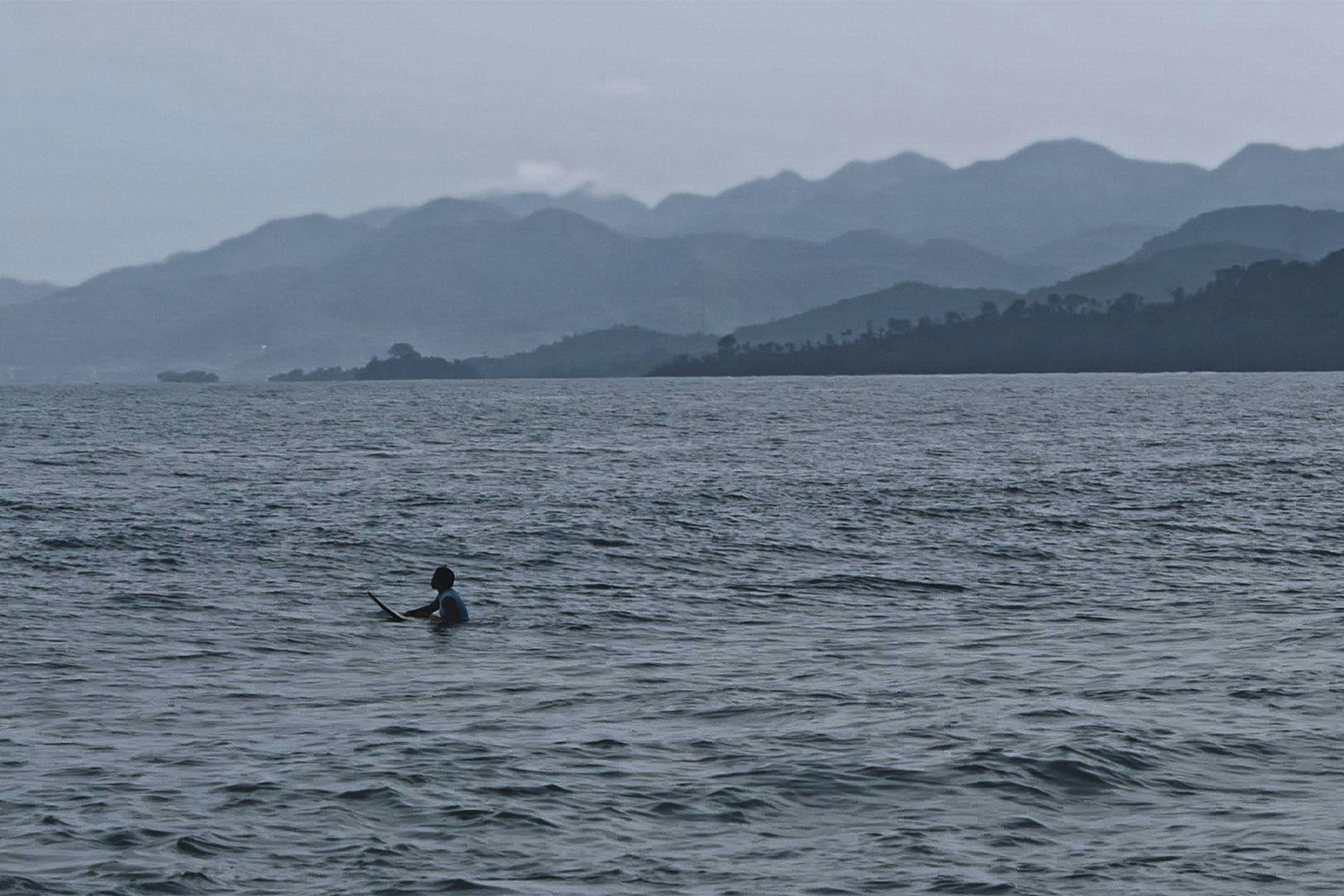
Kadiatu Kamara, the first female surfer in Sierra Leone, from the film A Million Waves by Daniel Ali
“The hyper-sexualisation of women in surfing culture is an interesting conversation and it’s an issue men need to be talking about too. It’s especially interesting for me as I have been on both sides of the debate. I am full of contradictions. I have modelled in countless photo-shoots and I have shouted feminism from the rooftops. I don’t believe I have to stop riding a pink surfboard just because I believe in equal pay.”
Sophie Hellyer
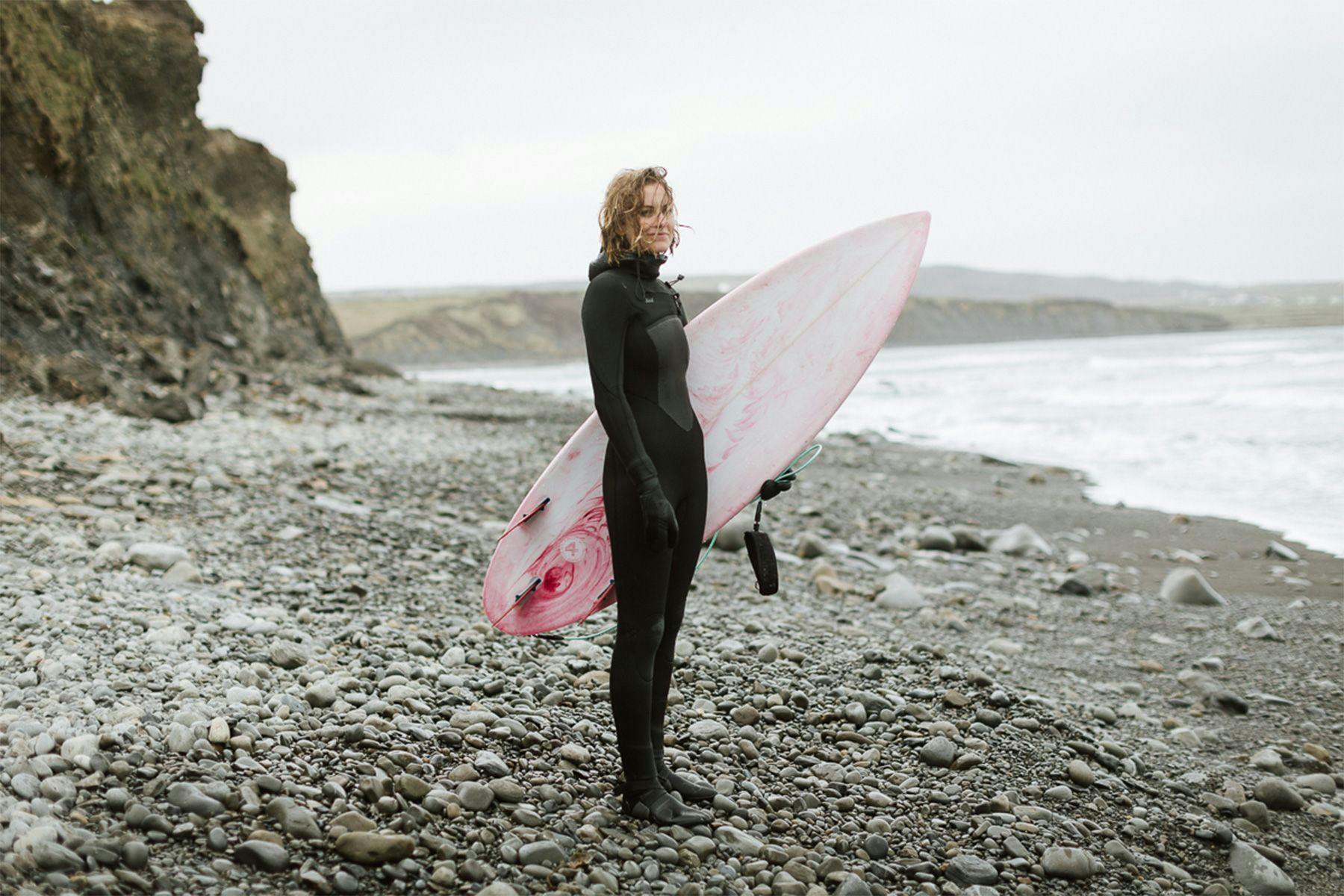
Sophie Hellyer in Ireland, photographed by Tom Shaw
Within surfing, and particularly within the realm of competitive surfing, progress towards gender equality is being made. Albeit slowly. Women’s Championship Tour events now receive equal coverage, and since 2014 there has been parity of prize money per-competitor on tour although it is allocated differently between the men’s and women’s tours so that the winners prize purse for the women’s events is 40% smaller. And the WSL can now boast its first female CEO in Sophie Goldschmidt (making it one of only 7% of Fortune 1000 companies to have a female CEO) who was appointed to the role last year and was recently declared the 15th most powerful woman in international sport for 2018 by Forbes Magazine. Goldschmidt was hired based upon her exceptional abilities and international sports industry experience; gender and her ability on a surfboard were irrelevant, and rightly so. Bye bye, old boy’s club and hello, professional appointments made based upon merit. But the general surfing population (still reported to be approximately 8:2 in favour of men) and the often-intertwined pillars of surf industry and media still have a way to come. When Alana Blanchard places second in the 2017 Surfer Poll as voted by readers, despite not having competed on the Women’s Championship Tour since 2014 and having been off-radar for much of 2017 (due to being pregnant with her first child), one has to wonder about the reasons behind voters’ choices and the make-up and motivations of Surfer Magazine’s readership. Blanchard is an excellent surfer but her position in second place, ahead of the top four female competitive surfers of 2017, is questionable.
“I believe the world would be a safer place if there were more gender balance, and this filters all the way down to the surfing media. Imagine surf magazines ran by women and how different an image they might portray of female surfers would be as a result. I don’t want the male dominated surfing industry to decide on my dignity or to make recognition of our equal humanity difficult. This is why I really like my wetsuit. It keeps us all equal. It emphasizes neutrality.”
Sophie Hellyer
Surf magazines run by women exist, both in print and online, however it could be argued that they are a response to the closed doors of the male-focussed mainstream surf media. A representative and inclusive surf media would not require separate publications.
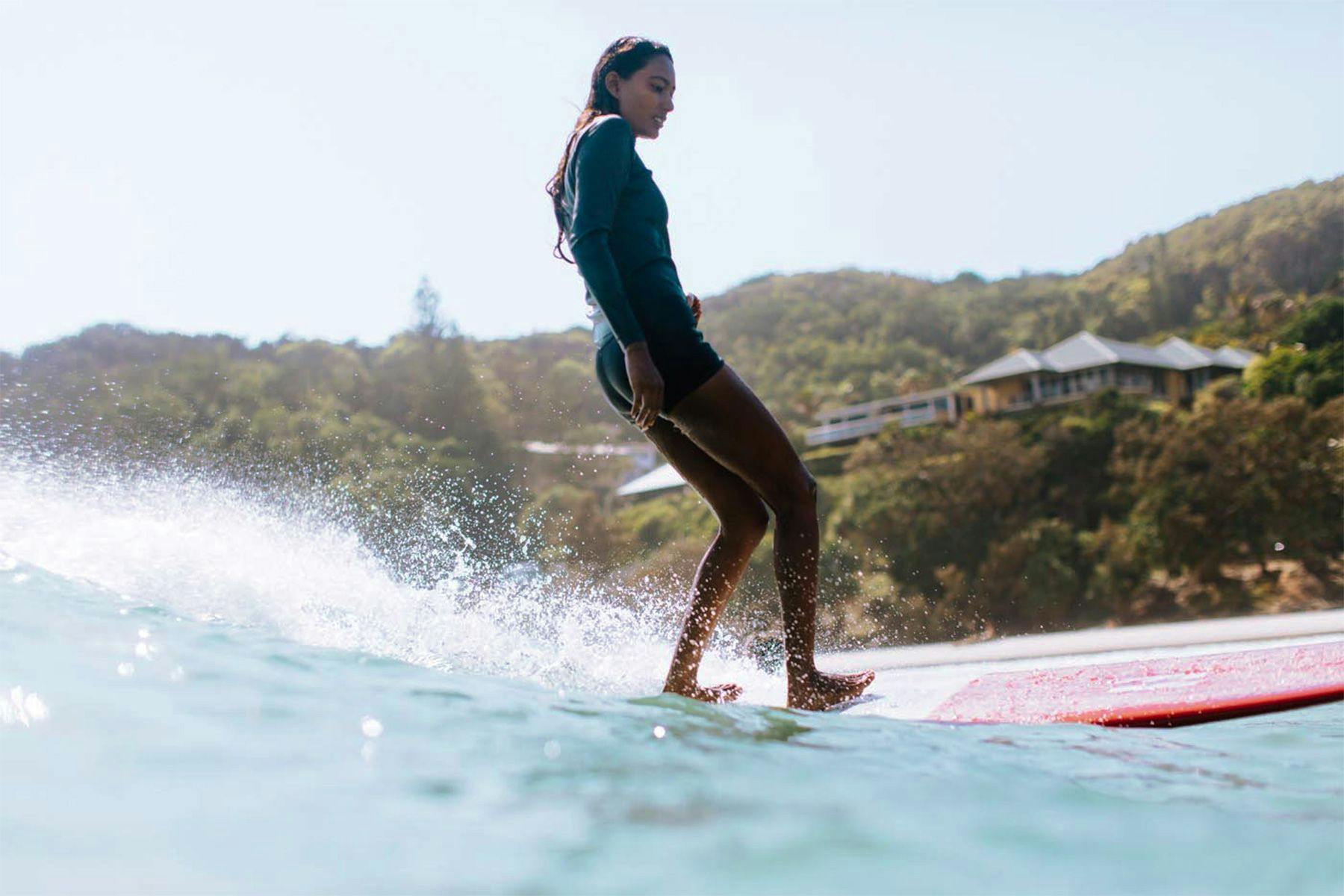
Indian professional surfer Ishita Malaviya, photographed by Ming Nomchong
“We should all take responsibility for making sure that we are not part of any mechanism which directly or indirectly limits people because of some artefact of their birth which they had no control over, be that their gender, sexual orientation, race or anything else.”
Ru Hill, discussing sexism in surfing in Surf Simply Podcast #49, August 2017
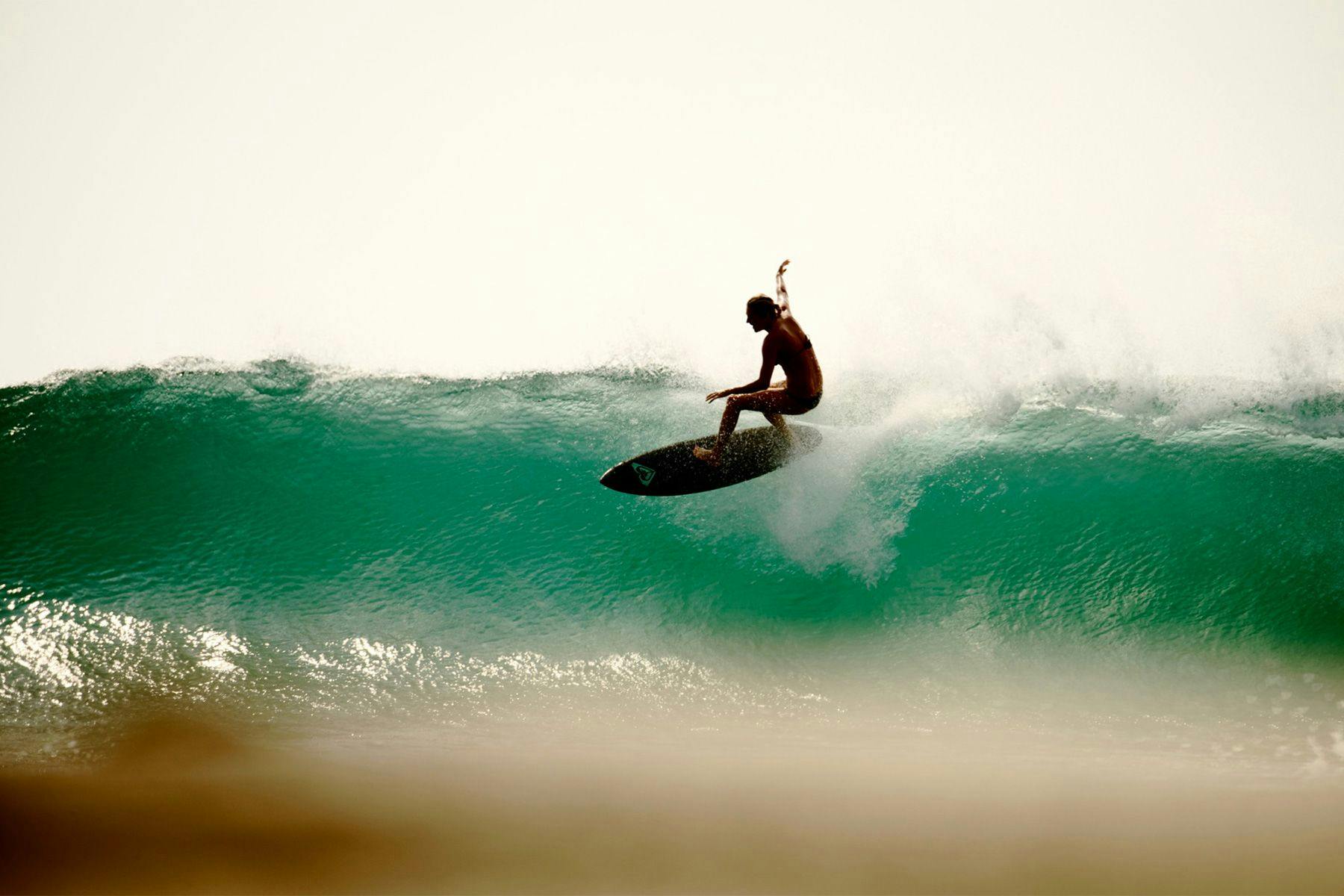
Stephanie Gilmore, from the film Dear Sylvia, love Steph by Morgan Maassen
Every surfer has a role to play in rectifying this imbalance in representation within surfing, from fostering opportunities for access to surfing at a grass-roots level for any young person, to making line-ups more inviting and accepting, and supporting surf brands and publications that present a more balanced view of surfing and include a broader range of female surfers. We don’t need to see fewer images of female surfers in bikinis; we need to see more images of inspiring female surfers, wherever they are and regardless of what they are wearing.